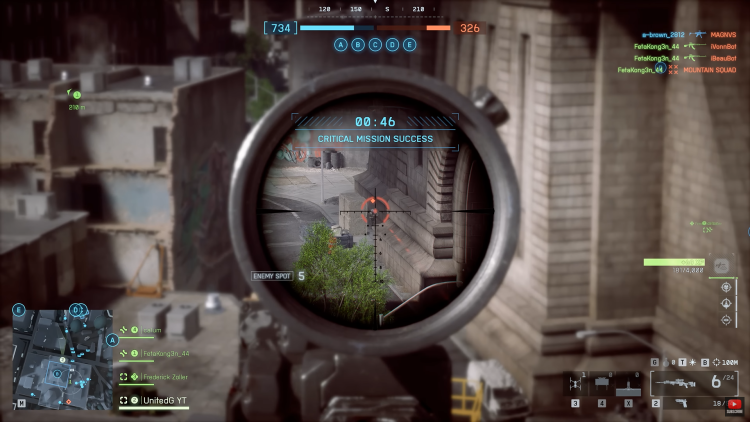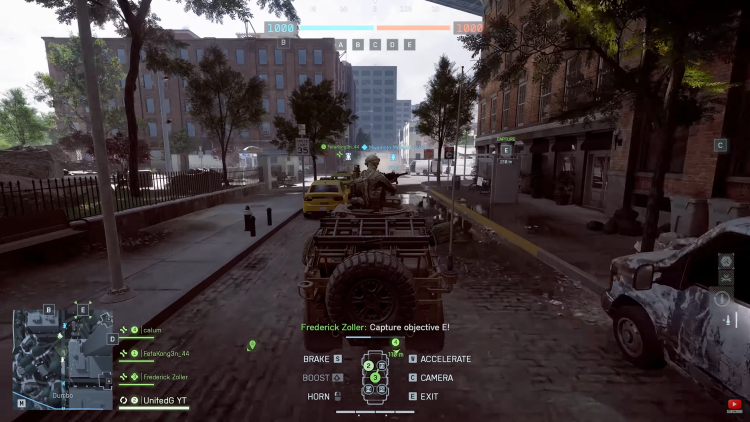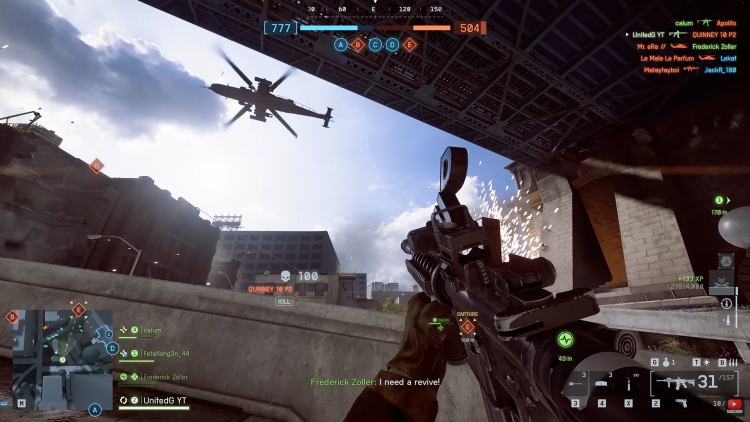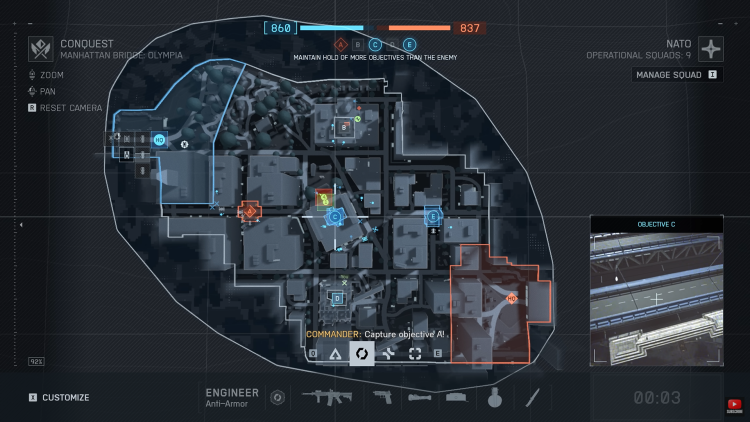Battlefield 6 Multiplayer Review Praises Layered Action and Destruction
Battlefield 6’s infantry combat is the anchor point of the multiplayer experience. The gunplay is precise, responsive, and rewarding, emphasizing weapon control and situational awareness. Koreis notes that weapons “look and sound awesome,” especially with high-quality audio setups that make firefights immersive through subtle sound cues such as bullet casing drops and environmental reverberations. Gun mechanics account for travel distance and bullet drop, allowing skill-based shooting without alienating less experienced players.
Battlefield 6’s single-player campaign has drawn far less enthusiasm from critics. Simon Cardy described it as a “safe, dull reimagining of what Battlefield once was,” contrasting sharply with the multiplayer’s dynamic and layered design, praised for its fluid combat and large-scale destructibility. While the online component demonstrates innovation and refined gameplay across infantry, vehicle, and aerial warfare, the campaign mode reportedly fails to capture the same energy, feeling static and formulaic next to the multiplayer’s evolving battlefields.
Battlefield 6’s multiplayer has been reviewed by IGN’s Justin Koreis, who describes it as one of the most cohesive and engaging shooter experiences of 2025. The review focuses exclusively on the multiplayer component, separating it from the single-player campaign. Koreis highlights how the game’s “layered” combat design — featuring infantry, vehicles, and aircraft — forms the core of its appeal, blending distinct gameplay experiences into a unified battlefield that remains dynamic and unpredictable from match to match.

The new entry in EA and DICE’s long-running shooter franchise refines the formula that made its predecessors popular while avoiding the excesses of Battlefield 2042. Koreis writes that Battlefield 6 achieves this balance through its well-constructed layers of combat, which coexist seamlessly within large-scale environments that react meaningfully to player actions. Each map offers an evolving warzone where destruction, tactical shifts, and player coordination shape the outcome.
The return of classic Battlefield classes provides players with clearly defined roles that influence strategy and team dynamics. The Assault Class remains the most aggressive option for frontline combat, while the Medic role focuses on sustaining teammates during drawn-out engagements. Engineers provide essential vehicle support, and Recon specialists handle long-range combat and tactical spotting. Koreis emphasizes that all four classes are well-balanced and distinct, ensuring that each player type can find an effective way to contribute to their squad’s success.
However, he points out that the loadout system introduces both flexibility and drawbacks. Battlefield 6 allows any class to equip any weapon, giving players the freedom to mix and match guns. While this promotes experimentation, Koreis found it easy to rely on a single favorite weapon across multiple classes. Each class still receives a modest statistical bonus for using its associated weapon type, such as improved accuracy for Recon players using sniper rifles, but these advantages are mild enough that they don’t always influence weapon choice. Despite this, class identity remains relevant for key abilities — for instance, only Engineers can repair tanks.

Progression pacing stands out as one of the review’s main criticisms. Koreis describes the early unlock structure as overly restrictive. Many powerful tools and gadgets, such as the Deploy Beacon for squad respawns, are locked behind higher levels. Class-specific challenges, which unlock additional specialization paths, only become available after reaching level 20. While daily and weekly challenges provide small boosts to leveling speed, it can take dozens of hours before players gain access to the more advanced equipment that makes customization truly satisfying.
Vehicles once again define the mid-layer of Battlefield 6’s multiplayer, creating the chaos and spectacle the series is known for. Tanks, armored cars, and transports dominate the larger maps, reshaping combat zones and forcing both sides to adapt. Koreis notes that the arrival of a tank “creates equal parts control and chaos,” emphasizing how these vehicles serve as both instruments of power and primary targets. Effective tank operation requires situational awareness — knowing when to advance, retreat, or call for repairs from Engineers can decide the outcome of a match. Vehicles demand more skill than infantry combat but reward mastery with immense battlefield influence.
The highest and most demanding layer belongs to aerial combat. Aircraft add vertical complexity and dramatic moments to matches, with jets and helicopters capable of shifting the battle’s direction through air superiority and precision strikes. Koreis describes this layer as a highlight for players who invest time in mastering flight mechanics, noting that it “makes it fun to be in the skies, terrifying to be underneath.” However, he also identifies a missing feature: there’s no dedicated training mode for aircraft, leaving new pilots to learn through trial and error. While a firing range exists for practicing with infantry weapons, the absence of an equivalent aerial tutorial makes it difficult for newcomers to gain proficiency in flying.

Battlefield 6 includes the franchise’s established multiplayer modes alongside new additions. Team Deathmatch remains a straightforward choice for quick sessions, while Breakthrough and Conquest continue to define the large-scale warfare experience. Breakthrough pits an attacking team with limited reinforcements against defenders across multiple objectives, while Conquest has both sides fight to control various sectors. Koreis praises both for their large-scale coordination and flow, stating that they still deliver the iconic “Battlefield moments” that players expect.
Among the new content, the Escalation mode introduces a fresh approach to objective-based combat. It starts with numerous control points that gradually decrease over time, funneling combatants into more concentrated engagements as the match progresses. Koreis calls this design “a fun shift in tactics,” as the evolving battlefield forces teams to constantly adapt their strategies. Rush mode, reminiscent of Counter-Strike’s structure, returns as a fast-paced option for smaller teams and shorter play sessions, providing instant action without sacrificing tactical depth.
Battlefield 6 launches with nine maps that vary in size, environment, and playstyle. Koreis identifies several standouts, such as the urban chaos of Saints Quarter and the expansive vehicle-focused Operation Firestorm. Empire State is described as a particularly balanced map offering open terrain, interior spaces, and elevated sniper positions, encouraging varied approaches and rewarding map knowledge. Strategic positioning remains essential; controlling rooftops or key choke points can determine territorial advantage.

Despite these strengths, not all maps meet the same standard. Koreis notes that Liberation Peak and Mirak Valley have become infamous within the community for their overreliance on sniper vantage points, which can lead to unbalanced matches where attackers are left exposed. Meanwhile, New Sobek City earns praise for its destructible environments and diverse terrain but suffers from an overabundance of anti-vehicle mines that can render armored units ineffective. These design issues are considered relatively minor but highlight how small imbalances can disrupt Battlefield’s signature interplay between infantry and vehicles.
The visual and technical presentation of Battlefield 6 also receives strong praise. Koreis describes the destructibility system as “excellent,” emphasizing how collapsing walls, crumbling buildings, and dynamic debris alter the battlefield in ways that are both cinematic and tactically relevant. Explosions create new lines of sight, destroy cover, and permanently reshape areas, ensuring that no two matches unfold identically. The destruction is not merely aesthetic but functionally integrated into gameplay — a tank shell that demolishes a building can change the frontline and expose hidden enemies.
One of the standout moments in Koreis’ review involves a skirmish on New Sobek City’s construction site. During the fight, he drove a tank through a wall and several support columns to break an enemy stronghold. “Dust and debris covered everything,” he wrote, describing how the scene captured Battlefield’s scale and intensity as teammates surged forward to secure the area. It’s this fusion of realism, scale, and mechanical depth that distinguishes Battlefield 6 from other contemporary shooters.
The game’s performance and stability are not detailed extensively in the review, but Koreis focuses primarily on gameplay design and the quality of combat systems. His concluding verdict frames Battlefield 6’s multiplayer as “expertly crafted,” commending its balance between accessibility and tactical depth. While acknowledging minor pacing and map issues, he emphasizes that the combination of fluid gunplay, layered vehicle interaction, and large-scale destruction results in one of the most polished multiplayer shooters of the year.
Battlefield 6’s ability to blend chaos with coordination appears to be its strongest achievement. From the first firefight on foot to the climactic destruction of entire city blocks, every element feeds into a larger system that rewards adaptability. According to IGN’s review, it is this synergy — between infantry, vehicles, and environmental collapse — that defines the identity of Battlefield 6’s multiplayer.

Comments